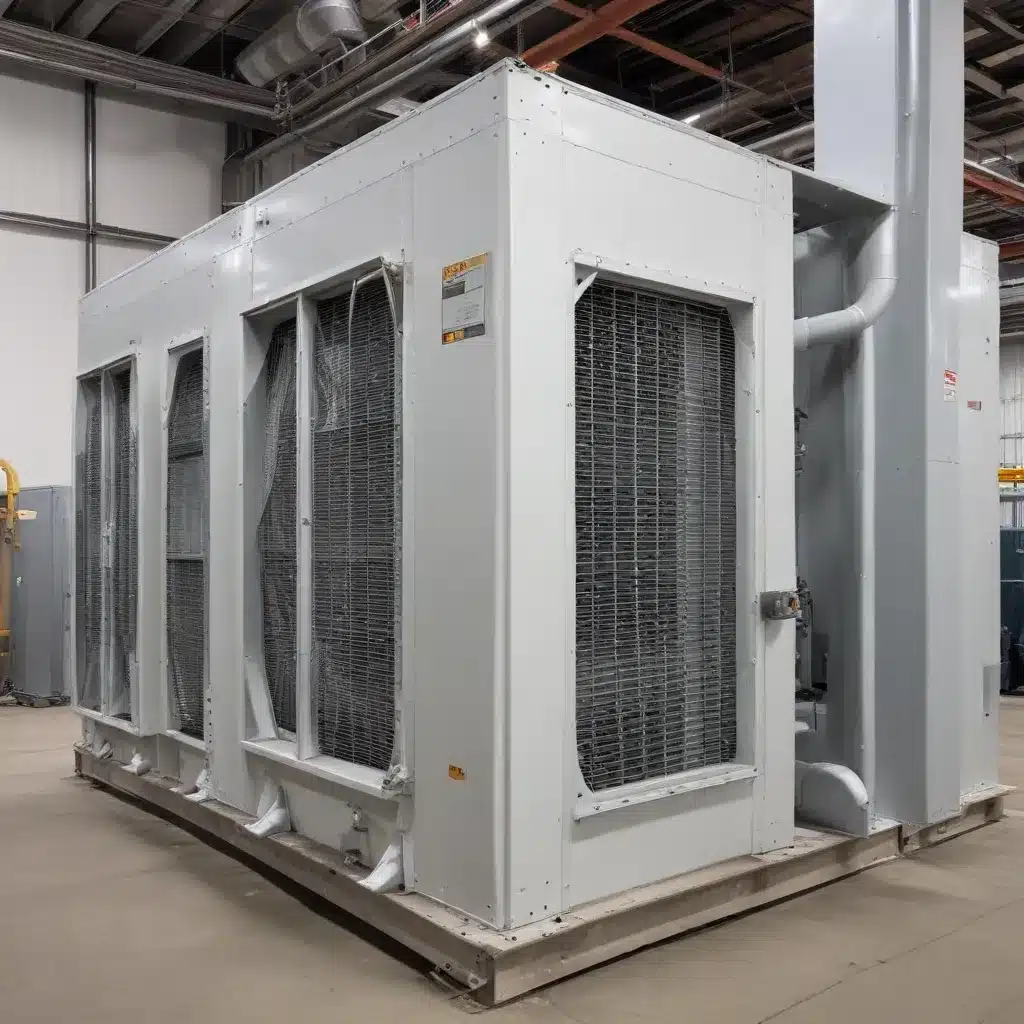
Unlocking the Power of Air-Cooled Heat Exchangers
As a seasoned expert in the world of air-cooled heat exchangers, I’m excited to share practical tips and in-depth insights that can help you maximize energy efficiency across various industries. Heat exchangers play a pivotal role in the realm of industrial cooling, and by understanding their design, engineering, maintenance, and optimization, you can unlock significant energy savings and performance improvements.
The Fundamentals of Heat Transfer
At the core of an air-cooled heat exchanger’s functionality lies the principles of heat transfer. The three primary mechanisms at work are:
- Conduction: The transfer of heat through direct contact between molecules within a material or between materials in direct contact.
- Convection: The transfer of heat through the movement of a fluid, such as air or water, over a surface.
- Radiation: The transfer of heat through electromagnetic waves, without the need for a physical medium.
By understanding these mechanisms and how they interplay within a heat exchanger, you can optimize the design and operation to achieve maximum efficiency.
Types of Air-Cooled Heat Exchangers
Air-cooled heat exchangers come in a variety of configurations, each with its own advantages and applications. Some of the most common types include:
- Shell and Tube Exchangers: Consisting of a series of tubes mounted inside a cylindrical shell, these exchangers excel at handling high-pressure and high-temperature applications.
- Plate-and-Frame Exchangers: Featuring a compact, modular design, these exchangers are highly customizable and can be easily maintained or expanded.
- Finned Tube Exchangers: Designed with extended surface area, these exchangers enhance heat transfer by utilizing fins to increase the surface area in contact with the air.
- Microchannel Exchangers: Leveraging small, parallel microchannels, these exchangers offer exceptional heat transfer capabilities while reducing size and weight.
The selection of the appropriate heat exchanger type depends on factors such as the specific cooling requirements, available space, and budget considerations.
Maximizing Energy Efficiency
Air-cooled heat exchangers offer a range of benefits that can significantly enhance energy efficiency in industrial applications. Some key advantages include:
- Reduced Energy Consumption: By effectively transferring heat from one fluid to another, air-cooled heat exchangers can minimize the energy required for cooling, leading to substantial cost savings.
- Improved Thermal Management: Maintaining optimal operating temperatures for equipment and processes can extend the lifespan of critical components and reduce the risk of failures.
- Flexibility and Adaptability: Air-cooled heat exchangers can be tailored to specific industry needs, allowing for customization and integration with other system components.
- Environmentally Friendly: Air-cooled systems often have a lower environmental impact compared to water-based cooling systems, reducing the carbon footprint and water consumption.
Best Practices for Maintenance and Optimization
To ensure the longevity and peak performance of your air-cooled heat exchangers, it’s essential to follow best practices for maintenance and optimization. Some key strategies include:
- Regular Cleaning and Inspection: Regularly cleaning the heat exchanger surfaces and checking for any signs of fouling or corrosion can help maintain optimal heat transfer rates.
- Optimizing Air Flow: Ensuring the proper air flow through the heat exchanger, either through fan configuration or duct design, can significantly improve efficiency.
- Monitoring and Adjusting Operating Parameters: Regularly monitoring and adjusting parameters such as fluid flow rates, temperatures, and pressures can help identify and address any issues before they impact performance.
- Predictive Maintenance: Implementing predictive maintenance strategies, such as vibration analysis or thermographic inspections, can help detect potential problems early and prevent unplanned downtime.
By adhering to these best practices, you can extend the lifespan of your air-cooled heat exchangers and maintain peak efficiency throughout their operational lifetime.
Emerging Trends and Future Innovations
The field of air-cooled heat exchanger technology is constantly evolving, driven by the need for more efficient and sustainable cooling solutions. Some emerging trends and future innovations to watch include:
- Advancements in Material Science: The development of new materials, such as high-performance alloys and coatings, can enhance the heat transfer capabilities and corrosion resistance of heat exchangers.
- Optimization through Computational Fluid Dynamics (CFD): Utilizing advanced CFD modeling tools can help designers and engineers optimize the flow patterns and heat transfer characteristics of heat exchangers, leading to improved efficiency.
- Integration with Renewable Energy Systems: Coupling air-cooled heat exchangers with renewable energy sources, such as solar thermal or geothermal systems, can create synergistic solutions that further boost energy efficiency.
- Intelligent Control and Automation: Incorporating smart sensors, advanced control algorithms, and predictive maintenance tools can enable real-time monitoring and optimization of heat exchanger performance.
By staying informed about these developments and embracing innovative technologies, industries can future-proof their cooling systems and maintain a competitive edge in an ever-evolving landscape.
Conclusion
Air-cooled heat exchangers play a crucial role in the pursuit of energy efficiency across a wide range of industrial applications. By understanding the fundamentals of heat transfer, selecting the right type of heat exchanger, and following best practices for maintenance and optimization, you can unlock significant cost savings and environmental benefits.
As the industry continues to evolve, staying ahead of the curve and embracing emerging trends will be key to maximizing the potential of air-cooled heat exchangers. Whether you’re modernizing existing systems or integrating new technologies, the insights shared in this article can serve as a valuable guide to help you navigate the exciting world of advanced air-cooled heat exchanger designs.
For more information and to explore the latest advancements in air-cooled heat exchanger technology, visit https://www.aircooledheatexchangers.net/.

